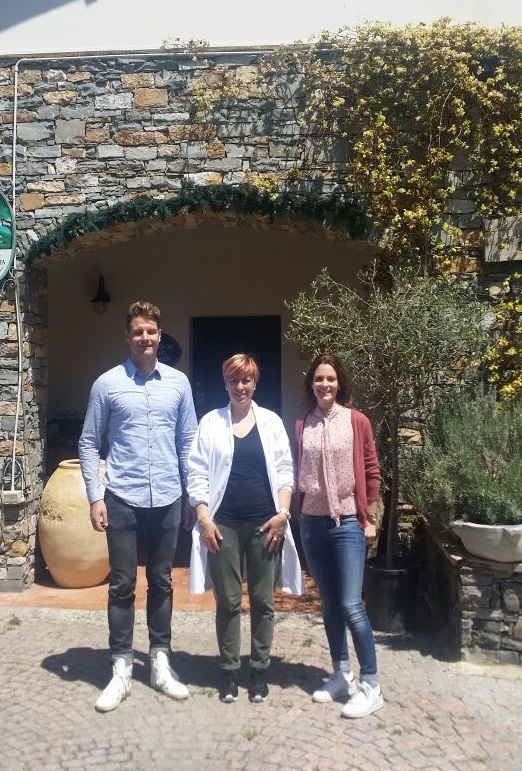Taggiasca Olives
The Taggiasca Olives are among the most prized varieties in the world, with a lot of (delicate) flavour: slightly bitter, nutty taste and soft texture. It is considered one of the best eating olives because the fruit is highly flavoursome. Also for olive oil, it is among the best in quality. The oil has a perfect yellow-green colour and the smell and taste are both fruity.
In the beautiful surroundings of the hills of the Ligurian Riviera, we made a visit to our producer to learn more.
History
Taggiasca olive trees: a variety which was introduced to the west coast of Liguria by Benedictine monks in 1600. The olive is named after the town of Taggia, where it was first introduced.
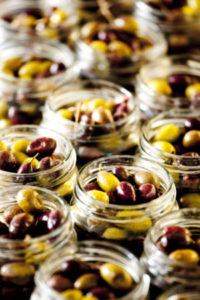
Harvest
The harvest of Taggiasca olives is conducted exclusively by hand. This is because the landscape: the naturally hilly terrain, leads to cultivation on terraces characteristic of the area, making it impossible to use large machinery. There are two methods of harvesting, which in Liguria are called "sbattute" (beaten) and "di rete" (from the net).
From the net
Nets are suspended under the trees, waiting for the olives to fall naturally (when they have reached full maturity, or as a result of the wind). Every few days, workers come back to collect the olives from the nets.
Beaten
By beating, the harvested olives do not fall naturally, but the workers beat the olive branches in order to knock the olives into the netting below. The nets are arranged and the trees beaten at the same time. This way they avoid the collection of olives that have already fallen down (for example too mature, or unhealthy olives). This guarantees a better quality product. Also, if the olives remain in the nets for a while, this may result in an increased amount of acidity.
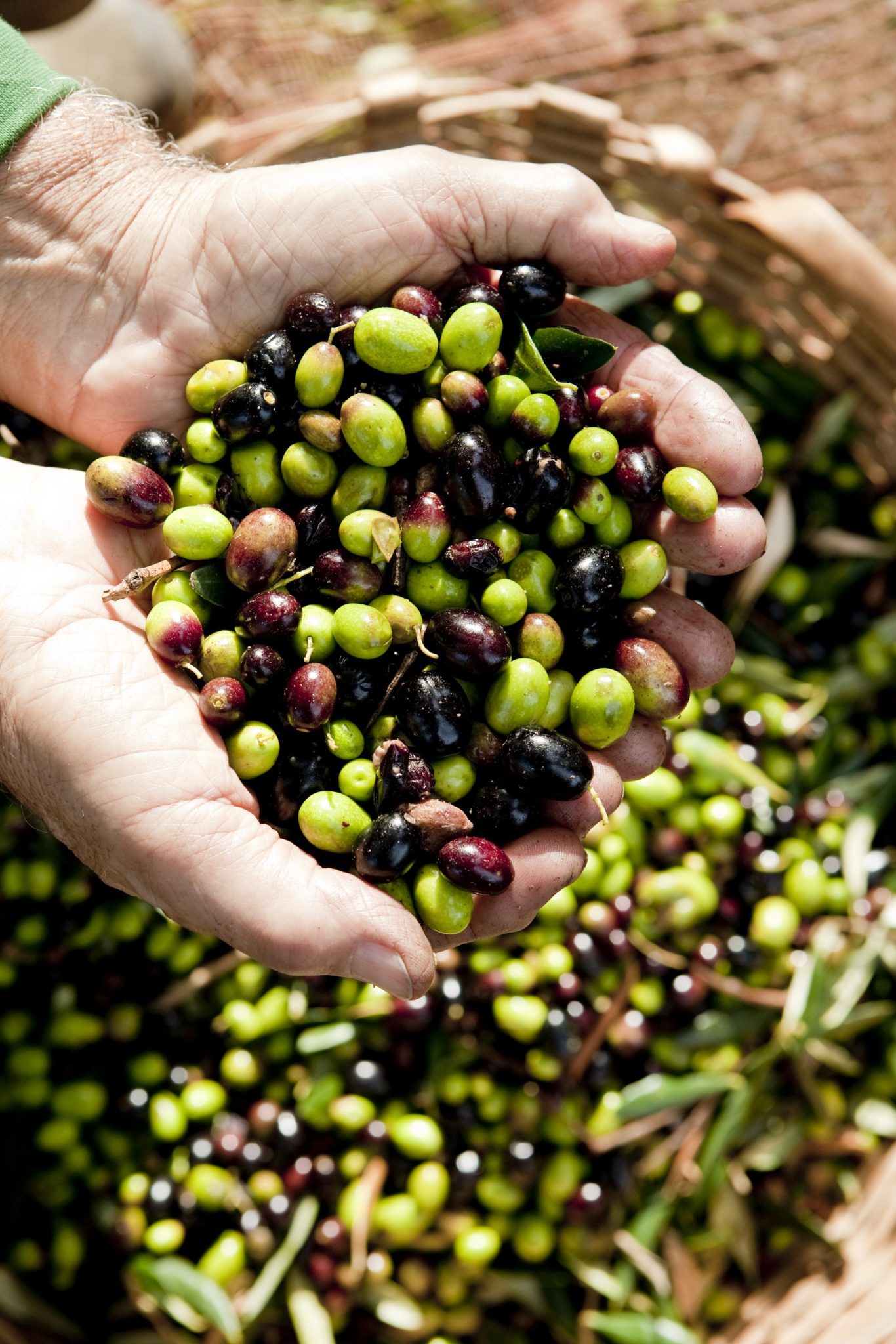
Our Taggiasca Olives
Our olives are collected by "beating", still using a traditional cane. During the harvest, you can see workers using the trappa. This is a long stick, typically made of chestnut- or hazelwood. Nowadays, the faster and less strenuous method of using electric canes (or those with motors) is becoming a widespread practice in Liguria.
They physically shake the branches of the trees so that the olives fall down, and can be collected from the nets below. After collection the olives are processed immediately, to keep the best quality.
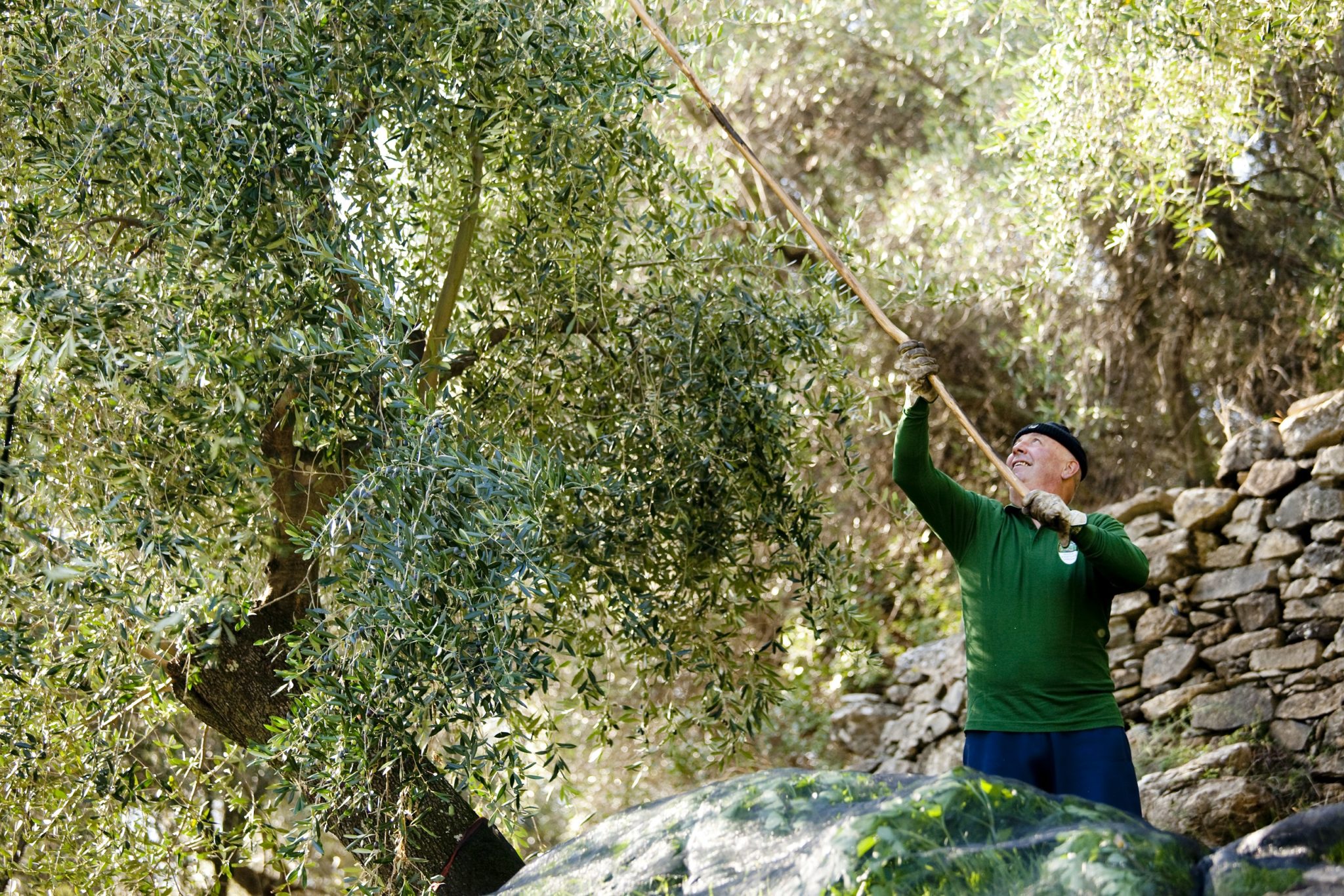
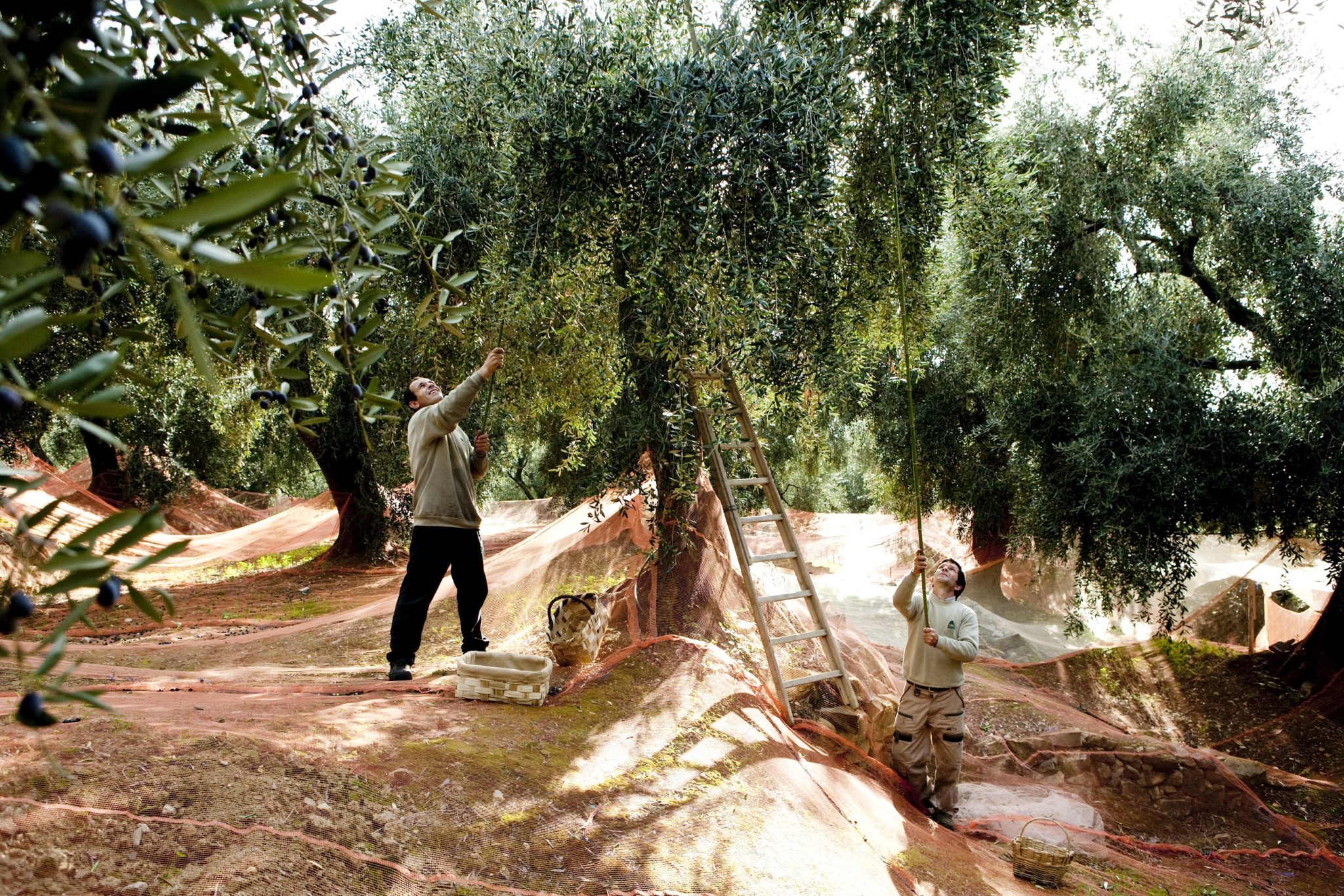
Production
Further steps of the production process we have seen, include :
- Optical quality control of the olives
- Machine selection by size. Each size olive has its own advantages, and is used in a different kind of product
- Removing the leaves and the pit (for certain products)
- Filling and closing the jars
- Packaging and preparing for shipment
Disover our Taggiasca olives
...and taste them yourself
